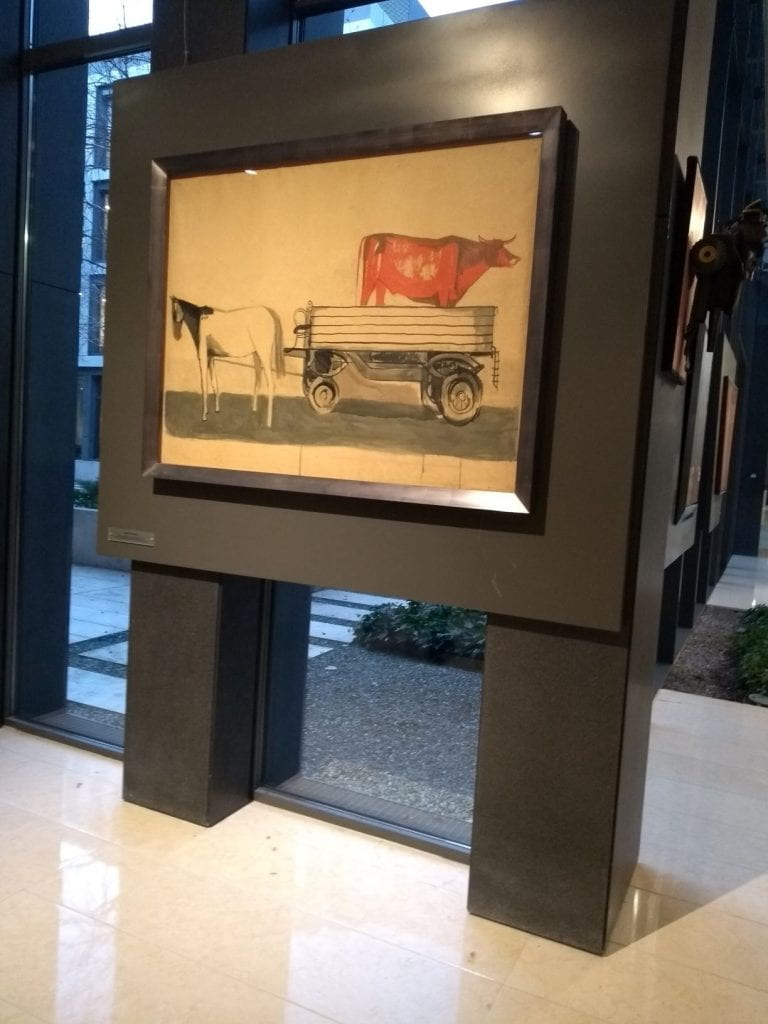Affective Art History
By editorial, on 4 March 2020
Dessislava Dimova
 Luiza Nader, associate professor at the Institute of Art History at the University of Warsaw, talked about Wladyslaw Strzemiński’s series of works on the Holocaust, through the perspective of her methodology of “affective art history.” Strzemiński, considered the father of the Polish avant-garde, took part in revolutionary life in Russia and returned to Poland in the 1920s where he was active in many artistic fields and wrote important theoretical texts, most notably conceptualizing the system of Unism. The series of collages called “To my Jewish Friends” was produced between 1945 and 1947 and consisted of juxtapositions between newspaper cut-outs and ink drawings on paper. The two elements of the collages seem strikingly disconnected formally and the drawings could be hardly seen to represent a rational statement about the documentary images, on which they supposedly comment.
Luiza Nader, associate professor at the Institute of Art History at the University of Warsaw, talked about Wladyslaw Strzemiński’s series of works on the Holocaust, through the perspective of her methodology of “affective art history.” Strzemiński, considered the father of the Polish avant-garde, took part in revolutionary life in Russia and returned to Poland in the 1920s where he was active in many artistic fields and wrote important theoretical texts, most notably conceptualizing the system of Unism. The series of collages called “To my Jewish Friends” was produced between 1945 and 1947 and consisted of juxtapositions between newspaper cut-outs and ink drawings on paper. The two elements of the collages seem strikingly disconnected formally and the drawings could be hardly seen to represent a rational statement about the documentary images, on which they supposedly comment.
 While Strzemiński was neither a participant nor a direct witness of the actual events of the Holocaust, he was an “observer” and in these works he dealt with the collective memory and response to the Shoah. Luiza Nader’s interpretation of Strzemiński indirect memory process, focused on the term “empathy” as part of her larger project of an affective reading of the history of art. In it affect is considered not simply as an emotion, but as a concept bridging intellectual, physical and emotional response. Nader develops her method of affective history of art as an “affirmative” approach, aiming to seek a way out of the impasse of negative categories such as catastrophe and trauma, which continue to dominate our political and cultural discourses.
While Strzemiński was neither a participant nor a direct witness of the actual events of the Holocaust, he was an “observer” and in these works he dealt with the collective memory and response to the Shoah. Luiza Nader’s interpretation of Strzemiński indirect memory process, focused on the term “empathy” as part of her larger project of an affective reading of the history of art. In it affect is considered not simply as an emotion, but as a concept bridging intellectual, physical and emotional response. Nader develops her method of affective history of art as an “affirmative” approach, aiming to seek a way out of the impasse of negative categories such as catastrophe and trauma, which continue to dominate our political and cultural discourses.
 Close
Close





